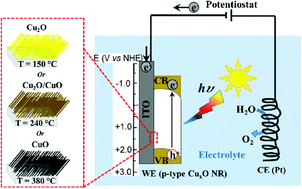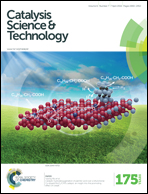Abstract
A facile, low cost, and convenient method to fabricate CuxO (x = 1, 2) nanorod (NR) arrays is demonstrated by thermally oxidizing Cu NRs fabricated by oblique angle deposition. The single phase Cu2O and CuO, and mixed phase Cu2O/CuO polycrystalline NRs can be tuned simply by varying the thermal oxidation temperature. These CuxO NRs exhibit excellent visible light photocatalytic activity for both cationic (methylene blue) and anionic (methyl orange) dye degradations. When used as a photocathode, they also show good photoelectrochemical performance, especially the mixed phase Cu2O/CuO NRs. The maximum stable photocurrent density is observed to be 0.24 mA cm−2 under a simulated solar light. Incident photon-to-current efficiencies are found to be 20% and 44% at incident light wavelengths λ = 500 nm and 400 nm, respectively. These results show that the CuxO NRs fabricated through the oxidation method can be a suitable candidate for efficient visible light active photocatalysts for energy applications as well as for wastewater treatment.


 Please wait while we load your content...
Please wait while we load your content...